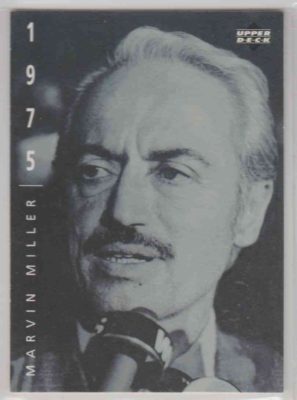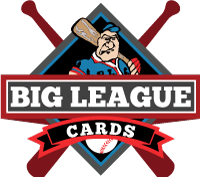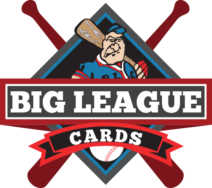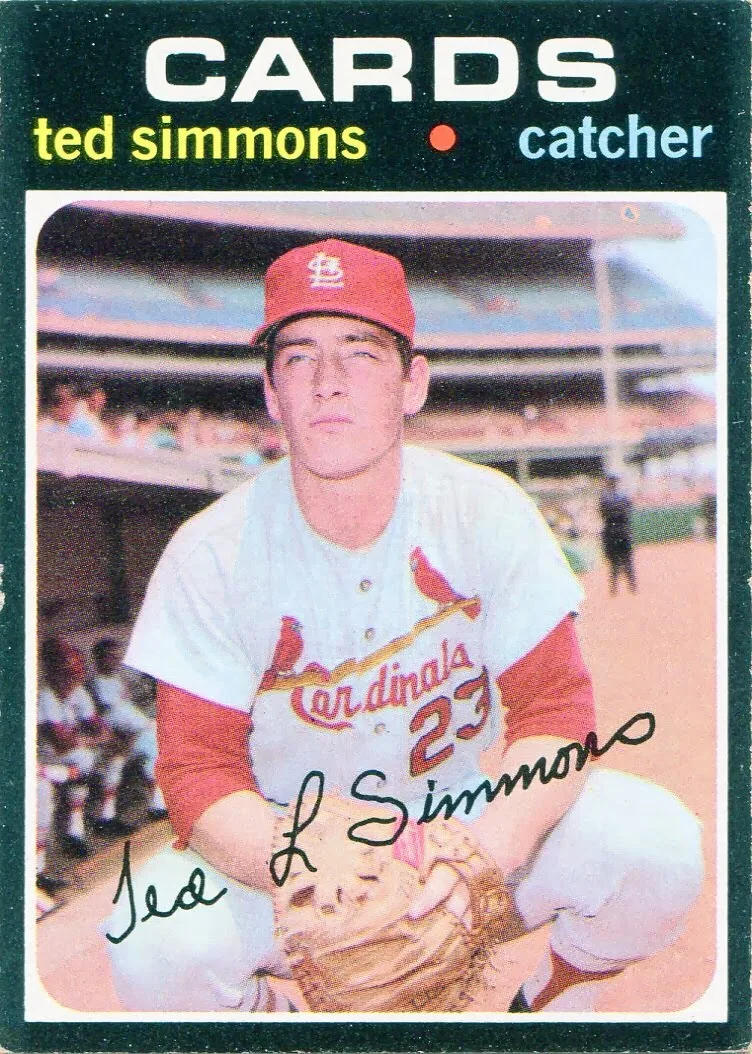Inside the Pack: Investing in Future Hall of Famers
Earlier this month, 16 men huddled together and changed the legacies of Marvin Miller and Ted Simmons forever, when the Modern Baseball Era Committee voted to elect both to the Hall of Fame. This election had quite an interesting ripple effect in our hobby: it sent prices for rookie cards of both soaring.
 In many ways, this was a perfect storm. Miller was not a player, and as I’ve written about in the past, he does not have a lot of cards due to his tense relationship with the powers-that-be in baseball. His “rookie card,” for all intents and purposes, appears in the 1994 Upper Deck Ken Burns Baseball American Epic box set. The set is a junk era invention, and Miller’s card was likely found in quarter boxes with the sealed set selling for less than $10. After his induction, Miller’s card shot up to $20, with a PSA 10 example selling for a whopping $250.
In many ways, this was a perfect storm. Miller was not a player, and as I’ve written about in the past, he does not have a lot of cards due to his tense relationship with the powers-that-be in baseball. His “rookie card,” for all intents and purposes, appears in the 1994 Upper Deck Ken Burns Baseball American Epic box set. The set is a junk era invention, and Miller’s card was likely found in quarter boxes with the sealed set selling for less than $10. After his induction, Miller’s card shot up to $20, with a PSA 10 example selling for a whopping $250.
Simmons had a different situation impacting his rookie card: it’s found in the 1971 Topps black border set, a difficult issue to find in high grade. Combine that with the fact that few people anticipated his election, and voila! You have high demand for rookies out of thin air. Raw Simmons rookies were selling for a buck or two before his induction, but have soared to the $8-$10 range for mid grade and even higher for high grade examples.
I won’t lie to you when I say that I anticipated both elections, and had been stockpiling both Miller and Simmons cards for a few months. This resulted in a nice little payoff.
Investing in prospect rookie cards is a risky gambit, but one that can pay huge dividends. As we are seeing with Miller and Simmons, the upside can be just as high with Hall of Fame inductees, but there is a much safer floor. While it costs a decent amount to buy into a prospect’s rookie card, buying into these “veteran” rookies is much cheaper. What’s more, if the prospect fails, or doesn’t hit his ceiling, you are out most of your investment; with the veterans, the card values are what they are because of their career, and are unlikely to drop if they don’t achieve enshrinement in the Hall.
If you’d like to join the fun of investing in future Hall of Famers, you can take a look at the committees over the next few years and play a guessing game. As the votes grow nearer, the guesses become more crystallized; this is because a lot of the results are impacted by who is on the committee. Last year, Harold Baines was inducted despite being one of the poorest choices on the ballot, but the election committee was filled with former teammates and coaches an GMs, which played to his advantage. The committee members are not revealed until close to voting time, so this far in advance, it’s simply a matter of making educated guesses as best as we can.
Next year’s vote is the Golden Days Committee, focusing on players whose careers mostly fell between 1950 and 1969. The ballot won’t be released until late next year, but we can make fairly educated guesses as to who will appear on it. Based on the presumptive nominees, here are three players I feel warrant investment, and two players who I feel don’t.
- Safe bet: Dick Allen. Allen’s career looks better and better as time goes on, as the type of player he was has become a model player now despite being under-appreciated in his own time. Allen had a .912 career OPS, with a 156 OPS+, in his 15 seasons in the bigs, along with 351 home runs and a .292 batting average. He made 7 All Star teams, won an MVP and a rookie of the year award, but he struck out a lot: 1556 times in 1749 games. That type of ratio is pedestrian through the lens of today’s game. Allen has also come close in the past; he fell one vote shy of induction for the 2015 class. His 1964 rookie card, on which he is identified as “Richie,” is something of a sleeping giant, in my opinion; due to the number of names Allen went by in his career (Richie, Dick, Rich), there can be some hidden gems on ebay. Raw mid-grade examples can be found for less than $5 each, and PSA 7s sell in the $80-$90 range.
- Solid bet: Jim Kaat. Kaat is another player whose career looks better in the rearview mirror. Having played for 25 season, he was often seen as a stats compiler. But his 283 wins is a number unlikely to be topped by any more recent starters, for whom wins are elusive. While he made just 3 All Star teams, and only placed in the Cy Young voting once (in 4th place), he also won 16 Gold Gloves in his career. Plenty of players make the Hall on the strength of their defense; why not a pitcher? Kaat fell 2 votes shy for 2015 induction, but I see him getting the necessary 12 votes the next time around. His 1960 Topps rookie can be found in raw mid-grade shape for between $6 and $10; PSA 7s sell in the $50-$60 range. As a single-player rookie card compared to Allen’s dual rookie, this one could have more helium should Kaat be deemed worthy of enshrinement.
- Long-term bet: Curt Flood. Make no mistake: Flood’s numbers are not Hall of Fame worthy. He has just 1861 career hits, a lifetime slash line of .293/.342/.389, and made just 3 All Star Teams; in fact, his best on-field argument for the Hall may be his 7 consecutive Gold Glove awards. But Flood is not a candidate for enshrinement because of his hitting or even his fielding. When he sued the league before the 1970 season, Flood sacrificed his career to end the reserve clause, which allowed MLB teams to buy and sell players as property. His crusade directly led to the establishment of free agency. His cohort was the then-union leader Marvin Miller, who finally achieved the requisite 75% this year. Now that Miller is in, Flood seems to logically follow. Flood’s children have started a campaign to get him elected, and some celebrities like Billie Jean King have lent support to the movement. But as we’ve seen in the past with folks like Bert Blyleven, grassroots support often takes time to materialize. I have a sneaking suspicion Flood won’t garner the necessary votes in this upcoming election, given that he’s never seen significant support even in committee votes. But the tide will swell, and the good news for Flood’s candidacy is that this committee next meets in 2025, giving folks a half-decade to get their act together and vote him in. If you don’t mind holding onto a card for five years, his 1958 Topps rookie is probably primed to increase more than any card on this list once he achieves induction. Because of his popularity, mid-grade raw cards already sell in the $10-$15 range, while PSA 7s generally range from $40-$60. But this is the best looking card from an aesthetic perspective, it’s older than Kaat’s and Allen’s rookies, it’s a high number, and it comes from a set with just one HOF rookie — Orlando Cepeda. This card is going to move big time once Flood finds his way to Cooperstown, whether it’s 2020 or 2025.
- Good bets, but not enough room for growth: Tony Oliva, Minnie Miñoso. Oliva’s numbers really don’t hold up to scrutiny, as he really only had an 8 year run of dominance and finished his career with fewer than 2000 hits and 1000 RBIs. But that stretch of dominance was so strong for some great Minnesota Twins teams that he has endeared himself in the memories of many voters. His rookie card is in 1963 Topps, another negative for investment purposes: this set’s “floating heads” rookie cards are very popular already, and he shares his card with fan favorite Ed Kranepool, and as such, the card already sells upwards of $15 in mid-grade raw shape. Miñoso is a baseball legend who deserves enshrinement, but has fallen short so many times it’s hard to believe he’ll ever get there. He has a different problem: he doesn’t really have a true rookie card. He started in the bigs in 1949, but didn’t get a card until 1952, when he appeared in both the Topps and Bowman sets. Those issues are already pricey, and likely don’t have a ton of room to grow.




